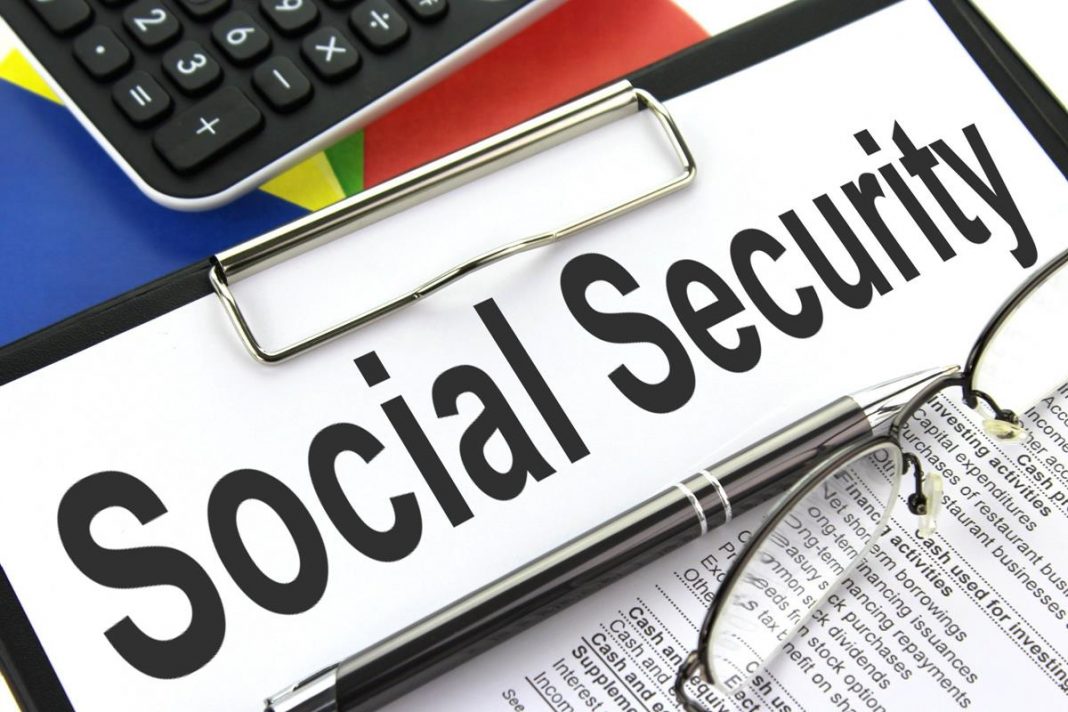Now that’s the question for the ages: When should I start taking Social Security? The problem is, you’re the only one who can answer the question because your situation is unique to you alone. You can’t base you decision on what your cousin Fred did, or what worked out for Bill who lives down the street. Your decision has to be well informed and fit you and what’s going on in your life. To help you make your decision let’s look at the things you will need to consider.
Eligibility
To be eligible for Social Security you have to be age 62 and worked at least 40 calendar quarters (not necessarily consecutive quarters) at jobs where you received Social Security credits. But you also have to consider what your full retirement age (FRA) is because beginning Social Security before your FRA means you get less money. The Social Security Administration penalizes you with a permanently reduced payout for taking your benefit early.
Penalties and bonuses
For most workers today, full retirement age is 67, but it can be as young as 66 for those born between 1943 and 1954. Applying for benefits early reduces your check by:
- 5/9 of 1% per month for the first 36 months of early claiming
- 5/12 of 1% per month for any additional months of early claiming for month 37 and beyond
When you claim Social Security at 62, you incur the maximum penalty of 25% if you have a FRA of 66, or 30% if your FRA is 67. For example:
- If you were born after 1960, your full retirement age is 67.
- If you start your benefits at age 62, a $1,000 monthly benefit would be reduced to $700.
- And if you are married and your spouse receives a spousal benefit, your spouse’s monthly benefit would drop from $500 to $350.
Click on your year of birth in the table below to see the month-by-month reduction of benefits and estimated benefit amounts when you claim before your full retirement age.
| Year of birth | Full retirement age (FRA) | Months between age 62 and full retirement age | Wage Earner, A $1000 retirement benefit would be reduced to | Spousal, A $500 spouse’s benefit would be reduced to |
| 1943- 1954 | 66 | 48 | $750 (reduced by 25%) | $350 (reduced by 30.0%) |
| 1955 | 66 and 2 months | 50 | $741 (reduced by 25.83%) | $345 (reduced by 30.83%) |
| 1956 | 66 and 4 months | 52 | $733 (reduced by 26.67%) | $341 (reduced by 31.67%) |
| 1957 | 66 and 6 months | 54 | $725 (reduced by 27.50%) | $337 (reduced by 32.50%) |
| 1958 | 66 and 8 months | 56 | $716 (reduced by 28.33%) | $333 (reduced by 33.33%) |
| 1959 | 66 and 10 months | 58 | $708 (reduced by 29.17%) | $329 (reduced by 34.17%) |
| 1960 and after | 67 | 60 | $700 (reduced by 30%) | $325 (reduced by 35.00%) |
On the other side of the coin, you can increase your monthly benefit if you wait past your FRA to collect Social Security. The government rewards you for waiting by adding delayed credits to your Social Security benefit amount.
Delayed credits are calculated for each month you wait beyond your full retirement age to age 70. You get an extra 2/3 of 1% for each month you delay after your birthday month, adding up to 8% for each full year you wait until age 70.
Keep this in mind. Delayed credits stop accruing at age 70, so it doesn’t make sense to wait past 70 to begin collecting your benefit.
Click on your year of birth in the table below to see a month-by-month increase of benefits and estimated benefits amounts when you claim after your full retirement age.
| Increases for delayed retirement | ||||
| Year of Birth(see above for applicable FRA) | Monthly/12-Month rate of increase | 12-Month rate of increase | Claim benefits at age 67/at age 70 | Claim benefits at age 70 |
| 1943-1954 | 2/3 of 1% | 8.0% | you’ll get 108% (12 month delay) | you’ll get 132.0% (48 month delay) |
| 1955 | 2/3 of 1% | 8.0% | you’ll get 106.7% (10 month delay) | you’ll get 130.7% (46 month delay) |
| 1956 | 2/3 of 1% | 8.0% | you’ll get 105.3% (8 month delay) | you’ll get 129.3% (44 month delay) |
| 1957 | 2/3 of 1% | 8.0% | you’ll get 104% (6 month delay) | you’ll get 128.0% (42 month delay) |
| 1958 | 2/3 of 1% | 8.0% | you’ll get 102.7% (4 month delay) | you’ll get 126.7% (40 month delay) |
| 1959 | 2/3 of 1% | 8.0% | you’ll get 101.3% (2 month delay) | you’ll get 125.3% (38 month delay) |
| 1960 and after | 2/3 of 1% | 8.0% | you’ll get 100% | you’ll get 124% (36 month delay) |
Given all those facts, taking Social Security early may still make sense if you have a large enough nest egg, you just don’t want to work any longer, you’re in poor health or you have responsibilities as a caregiver.
Receiving Social Security early and continuing to work
If you are under your Full Retirement Age, receiving a Social Security benefit, and still working and getting a paycheck, the Social Security Administration is watching you. If you earn more than a government-set threshold, which is adjusted upward each year for inflation, the SSA takes back some of your Social Security check.
Annual Social Security Earnings Test
The Social Security earnings test works like this. Earn more than the threshold and the SSA takes back $1.00 of your Social Security for every $2.00 you earn above the limit. In the year you reach Full Retirement Age (FRA) the limit is quite a bit higher. Earn more than the threshold and SSA will take back $1.00 for every $3.00 above the limit.
Here’s the good news. The earnings test eventually goes away. Once you reach Full Retirement Age you can earn as much as you want without fear that the SSA is going to take back some of your Social Security payment.
Monthly Social Security Earnings Test
There is also a Monthly Social Security Earnings Test. The SSA will run the annual test and the monthly test and set your payments according to the results that are better for you.
You can only use the monthly test for one year, usually the first year you retire. It generally works best for people who retire mid-year and have already earned more than the annual limit. Those who pass the monthly earnings test can receive 100% of their benefits for any whole month the agency considers them retired, regardless of total annual earnings.
Let’s say you turn 62 in June and retire at the end of the month. You made $100,000 in the first half of the year. You want to begin receiving Social Security in July. Based on the Annual Earnings Test you would receive no Social Security benefit that year.
But if you use the Monthly Earnings Test, as long as you don’t earn more than the annual threshold amount from July through December, you would receive your full Social Security benefit. If you earn more than the allowable monthly threshold in one of those months, SSA uses the $100,000 you earned during the first half of the year and you won’t receive a Social Security check for that month.
There is an earnings test calculator that can help you figure out the effect of the earnings test on your retirement benefits.
What Income is Counted for the Test
Not all income is considered for the Social Security Earnings Test, only earned income from a job or self-employment income. Passive income is not included, things like investment income, retirement plan payouts, distributions from IRAs and annuities, and rental income.
Getting Back Forfeited Benefits
You may be asking yourself, “What happens to the money I lost because of the Earnings Test?” The good news is, you will get some of it back as an increase to your monthly benefit beginning in the month you hit Full Retirement Age (FRA).
Say you took benefits at age 62 instead of waiting to your Full Retirement Age, giving your benefits a haircut of 25%. If you forfeited 12 months’ worth of benefits to the earnings test, at your Full Retirement Age, you’ll be treated as if you claimed benefits three years early, instead of four. Your lifetime benefits reduction will get slashed from 25% to about 20%. That puts more money in your check every month, and if you live long enough, you’ll recoup all the benefits the earnings test temporarily took away.
Taking Social Security and the effect on a spouse
Considering the Social Security spousal benefit may also be part of your decision when to begin your benefit. The spousal benefit can pay a spouse as much as 50% of the benefit received by the higher earning spouse.
Let’s say Mary spent most of her married life at home raising kids. She has worked some and has the required 40 quarters, but she earned very little income. Based on her own work history, Mary is eligible for $500/month. But her husband is eligible for $2,000/month based on his work history. Mary can file for the spousal benefit and receive $1,000 based on her spouse’s work record rather than the lower benefit based on her own.
Here’s the caveat. A spouse cannot collect the spousal benefit until the working spouse begins to receive their Social Security benefit. That may have an effect on the decision to begin your payment. Also, if the spouse begins receiving the spousal benefit before reaching full retirement age, the spousal benefit will be permanently reduced.
How much will I receive
Yep, how much your Social Security benefit will be is a big part of deciding when to begin. You can estimate your Social Security benefit by creating a mySocialSecurity account at ssa.gov, or calculate your benefits using the Social Security calculator. Your mySocialSecurity account will also have SSA’s estimate of your benefit at ages 62, full retirement age, and age 70.
Setting up an online account with Social Security gives you access to important information and streamlines the application process. A mySocialSecurity account is free, secure and can help you with many tasks. You can estimate your benefits, track your earnings history, and request a replacement Social Security card.
By claiming your account, you can help prevent fraud andidentity theftof your Social Security information and benefits. If criminals obtain your Social Security number, they may try to open a mySocialSecurity account in your name and redirect your benefits to an account they control. But if you open your mySocialSecurity account now, you can help prevent this scenario, since any individual can only have one my Social Security account open per Social Security number.
Through your account, you can print benefit verification letters often needed to demonstrate a steady source of income when applying for or renewing visas. You can also retrieve and print your SSA-1099/1042S tax statement to prepare your tax return, as Social Security is unable to mail replacement statements to a foreign address.
What you need to apply
The application process will be easier if you gather the required information ahead of time. The Social Security Checklist for Online Medicare, Retirement, & Spouses Applications is a helpful tool for knowing what you’ll need. Some of the things you may be asked for include:
- Social Security number, original birth certificate or proof of U.S. citizenship or resident alien status
- Verification of your record of earnings
- Employer details for current year and prior 2 years
- Routing and account numbers for your bank account to set up direct deposit for benefit payment
- Employer name, start and end dates of employment
- Current and past marriage information:Your spouse/former spouse’s Social Security number and birth date, Date you got married/divorced and where you got married (city, state, country)
- U.S. Military Service:Type of duty and branch and service period dates. Military service papersif you served before 1968
Social Security’s birthday rules
Your birth date determines when you are eligible to apply for benefits. However, the Social Security Administration has some specific rules for those born on the 1st day of a month, January 1 and February 29. If you fall into any of these three categories, you will use a different date than your birth date to claim your benefits;
- If you were born on the first of the month, Social Security will figure your benefit (and your full retirement age) as if your birthday was in the previous month. This is the case if you were born on the first of the month from February to December, but not January.
- If you were born on January 1, your birth month is December, and your birth year is the year prior to your actual birth.
- If you were born on February 29, even though your birthday only comes once every four years, your benefits won’t be affected. So even though your actual date of birth doesn’t come every year, the month does, and the Social Security Administration counts February as your Birth Month.
When to expect your first check
Once you’ve applied, your first check will arrive the month after the one you pick in your application because Social Security always pays a month in arears. You can apply any time up to four months before the month you pick.
Conclusion
Absolutely there is a lot of thinking and research that goes in to deciding when to begin receiving your Social Security benefit. But without all the work, you might end up making a decision that, in the long run, isn’t the most profitable one for you.
This information is presented for informational purposes only and does not constitute an offer to sell, or the solicitation of an offer to buy any investment products. None of the information herein constitutes an investment recommendation, investment advice or an investment outlook. The opinions and conclusions contained in this report are those of the individual expressing those opinions. This information is non-tailored, non-specific information presented without regard for individual investment preferences or risk parameters. Some investments are not suitable for all investors, all investments entail risk and there can be no assurance that any investment strategy will be successful. This information is based on sources believed to be reliable and Alhambra is not responsible for errors, inaccuracies, or omissions of information. For more information contact Alhambra Investment Partners at 1-888-777-0970 or email us at info@alhambrapartners.com.




